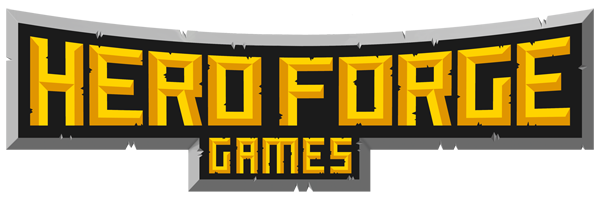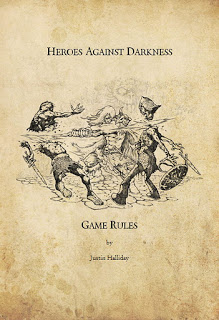Before we get started, I’d like to note that these are my personal opinions and D&D and its various editions. I don’t want to start an edition war. Edition warriors are invited to do battle at one of the many forums dedicated to their passions.
Who indeed…
Our playing group has been largely stable for a long time, with only a few arrivals or departures over almost 15 years. After playing years of various incarnations of D&D (with a few years of Magic: The Gathering), we worked our way to the 4th Edition of Dungeons & Dragons.
The arrival of 4th Edition bought us back from Magic to D&D. We bought the three main manuals, chipped in for an Insider account, built characters, and started a campaign which largely followed some published modules; Keep on the Shadowfell, Seekers of the Ashen Crown and Pyramid of Shadows.
As with many games that offer a rich variety of feats, backgrounds, individual powers and skills, 4th Edition has so many options that it drives obsessives like me to endlessly min/max and search for optimal character builds.
To me, the advantages and improvements of 4th Ed were clear:
• Unified core mechanic (the d20), instead of the multiple dice and mechanics for different occasions.
• ½ Level mechanic to gradually increase power of characters at higher levels (replacing hit and saving throw tables).
• Defenses to replace saving throws.
• Interesting actions in combat for all character classes.
Over time though, and as many have commented, some of the failings of the system manifested:
• Progressively slower and more complicated combat at higher levels.
• Unrealistic martial powers for fighting classes.
• Endless options for feats, backgrounds, themes, powers and skills.
• Requirement of DDI subscription for managing characters.
• Too many powers that make minis essential and further slow combat.
• Conditions and dependencies between characters that make combat too complicated.
These issues with the system were problems to a greater or lesser extent to each of our group’s individual players. One player yearned for the simplicity of Basic (based on the Rules Compendium), others for some other variation of D&D from further along its long history. So, we decided to got back and play a few of the older editions of D&D, starting with Basic.
After years as a player, I tried my hand at DMing Basic (using Keep on the Borderlands as the start of the campaign).
From the outset it was obvious that our collective memories of Basic were very different from the realities and I was reminded of my old dislikes:
• Different XP requirements for classes.
• Races as classes (and vice-versa).
• Lots of little rules.
• XP mainly for treasure, not monsters or achievements (meaning that the type of monsters you meet largely determines how quickly you advance).
• Lack of combat options for fighting characters.
• Lack of spells and abilities for low-level characters.
• Low survivability and slow healing for new characters.
• Lack of a unified systems, some abilities or stats get higher whereas others get lower with improvement (Ability Scores get higher as they improve, Armor Class gets lower).
• Inconsistent mechanics for determining the result of actions (initiative on a d6, attacks on a d20, thief skills on percentile, etc).
• Reliance on attack tables and saving throw tables to reflect development and improved capabilities of different classes and higher level characters.
• Spell levels are different from character levels.
The experience of transitioning from the most modern iteration of D&D to one of the earliest was illuminating, to say the least. Some of these issues we house-ruled away, with changes to rolling characters, healing, character death and HP gained each level. But many of the idiosyncrasies are intrinsically linked to the system, and simple house-rules cannot address them all.
Of course, I’m sure that each of the characteristics of the game that annoyed us or detracted from the game are for someone else a key attraction of the system. Some people love the idea of the simple fall of the dice possibly killing a character outright (or leaving them bed-ridden for some weeks to recover). Some love the idea of rolling ability scores (3d6) in order and taking the results and playing them.
With each edition, D&D became progressively more complicated and ‘crunchy’, probably peaking in mechanical complexity at 3.5, before changing direction dramatically in half an edition. Many players love the crunch and options of 3.5 and Pathfinder. Many players love the relative simplicity of OD&D and Basic. Many players love the combat tactics and powers of 4th Edition.
Without a single edition of D&D suitable for our play-style, I started work on a set of house-rules that would eventually become Heroes Against Darkness. Over days and months, the key goals of the system emerged:
• Take the core mechanic of d20-style rule-sets.
• Reduce the paperwork and character management through minimal character build options.
• Use defenses instead of saving throws.
• Align all stats and bonuses so bigger is better.
• Introduce balanced combat powers for all classes that offer meaningful choices and situational advantages in combat.
• Increase combat damage at higher levels.
• Introduce Anima and spell powers (instead of Vancian magic), so that players of magi characters have options in and out of combat.
• Use simple armor and weapon proficiencies based on class.
• Replace predefined skills with class and background appropriate skills that give bonuses to Ability Tests.
• Introduce Magi classes based on five schools of magic; Warlocks for physical, Healers for physiological, Canonates for divine, Necromancers for death, and Mystics for control and influence.
• Introduce separate fighting classes; Warriors, Barbarians and Berserkers.
• Introduce specialist classes; Hunters and Rogues.
• Introduce the magical cross-class; Hospiters (similar to the old-school Cleric or Priest classes, but without the divine aspects of those classes).
The few pages of house rules evolved into a fully-fledged and (eventually) self-contained system.
Which raises the question of where does HAD fit along this continuum?
How do you categorize a system that, like Basic, doesn’t offer build options, feats or proficiencies but at the same time does feature the ‘modern’ unified underlying mechanics of 3rd Edition(s) and a multitude of combat powers like 4th Edition?
Is it old-school? Is it new-school? Is it rules-lite? Is it modern?
Today, I like to think that Heroes Against Darkness is off the D&D continuum; it’s jumped off the straight line that is the history and development of D&D and it’s formed a triangle somewhere else in the universe of possible role-playing games.
So, Heroes Against Darkness is for the sort of playing group that wants:
• Combat with meaningful tactics and useful powers
• Simple system to learn and play
• Mechanically sound system based on modern underlying principles
• It’s free! 🙂
Of course there’s always more to do, so back to the grindstone…


2 thoughts on “Who’s Heroes Against Darkness Designed For?”
Now that I have read this I am even happier that I have decided to use this system for my new campaign. Excellent work with an excellent reason for existing. Cheers!
Thanks Andrew, I hope you guys have a great time!